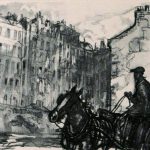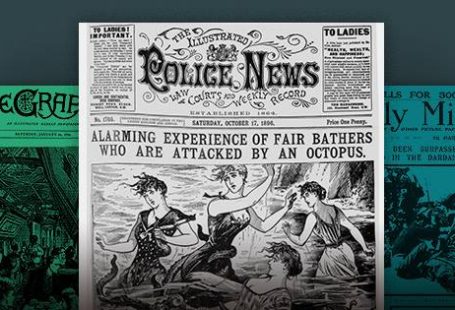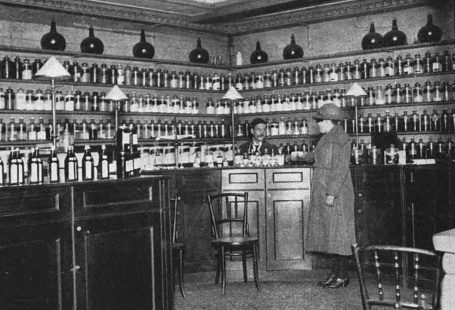In thinking about using newspapers to discover more about the vast array of occupations that have existed over the centuries — some of which still exist while others have been lost to annals of time (bunters, decretists, and gummers, to name a few) — it’s inevitable to end up thinking about the innovators and inventors who have made headlines over the years.
Don’t miss a thing, follow us on Instagram!
Lasting power
Some inventions have lasting power and others, sadly for their inventors, do not.
Motorcycle of the skies
What in hindsight likely surprises no one, this one-man helicopter is no more. We don’t see our neighbours nipping to the shops via a modernised motorcycle of the skies nor do we see it in modern military transportation equipment. But we’ll always have this photograph printed in The Sphere to remember it by.

Thermos

James Dewar‘s invention, on the other hand, enjoyed phenomenal success — a success that is still in force today. The newspapers are full of adverts for his thermos flask. Unfortunately for Dewar, he did not patent his invention and, as such, did not benefit monetarily from his invention.

Inventors who died by their own inventions
Not all inventions are a success and, even those that are, can lead to tragedy. Some of history’s enterprising inventors and innovators have met their ends due to their own creations or experiments.
Jean-François Pilâtre de Rozier

Jean-François Pilâtre de Rozier was the first known fatality in an air crash. He, along with Pierre Romain, were attempting to cross the English Channel in one of his Rozière balloons when it crashed on 15 June 1785. Both de Rozier and his companion died in the crash, which was from a height of around 450 m (1,500 ft).


Otto Lilienthal
Otto Lilienthal (1848–1896), an engineer occupied with the creation of a flying machine, died shortly after he crashed one of his hang gliders.

Find more on Otto and his fatal flight
Alexander Bogdanov
Alexander Bogdanov (1873 – 1928) was a Russian physician and founder of the Institute for Hematology and Blood Transfusions who, in an effort to produce eternal youth by rejuvenation, researched and experimented with blood transfusion. In his experiments, he gave himself a blood transfusion from a student who was suffering from tuberculosis and malaria. Bogdanov died from the effects of that blood transfusion (his death may have been a matter of blood type incompatibility).

Marie Curie
Marie Curie (1867–1934), co-discoverer of radium and polonium and inventor of the process of isolating radium, died of aplastic anemia — a result of exposure to the radiation from her research material. During these early days of work on radioactive elements, the catastrophic and lethal dangers of radiation were not fully known or understood.

Register today and view 3 free pages!






